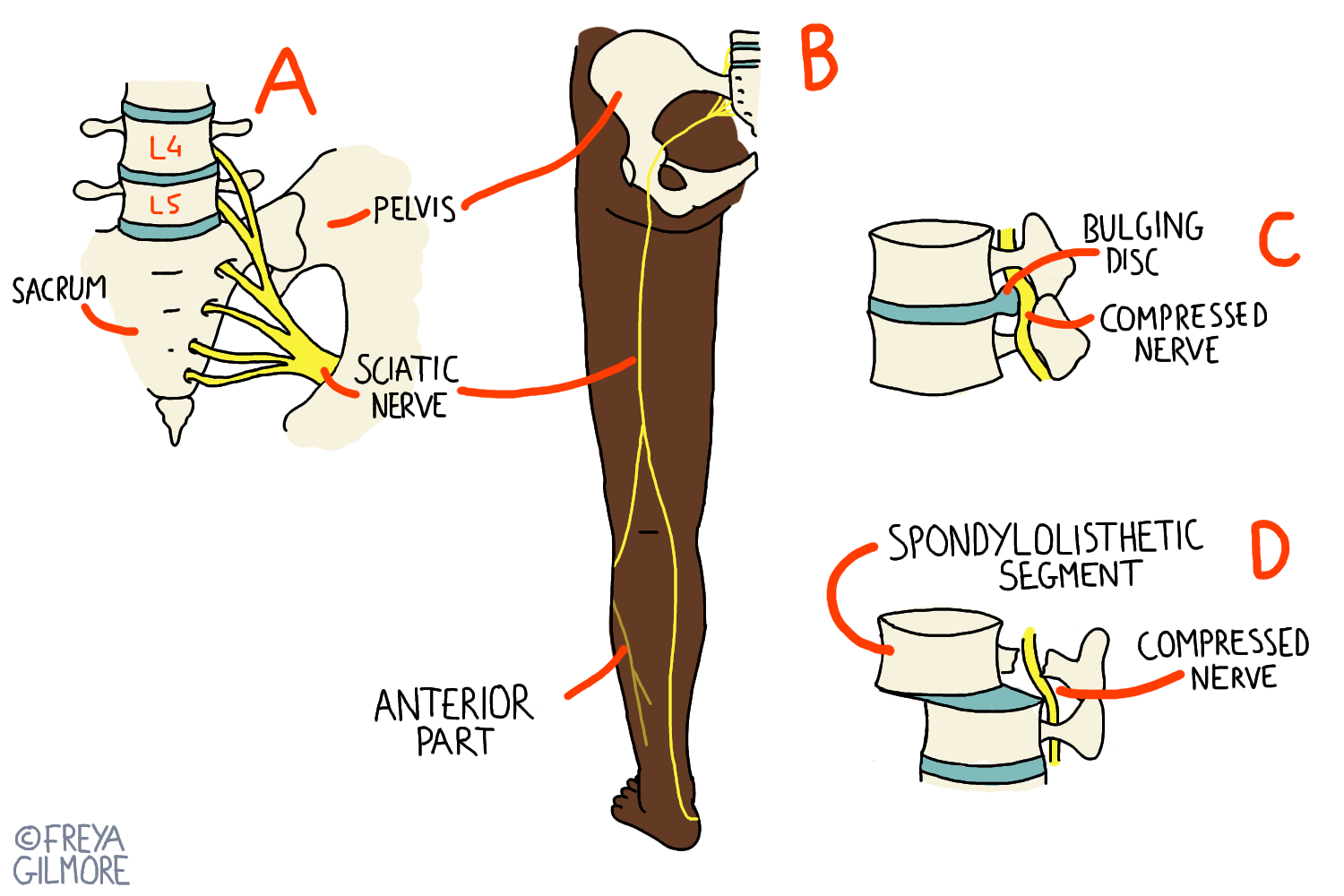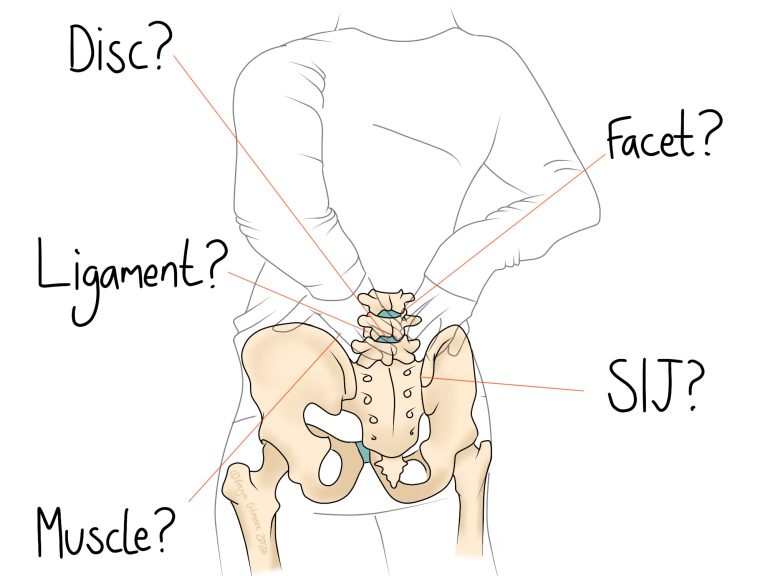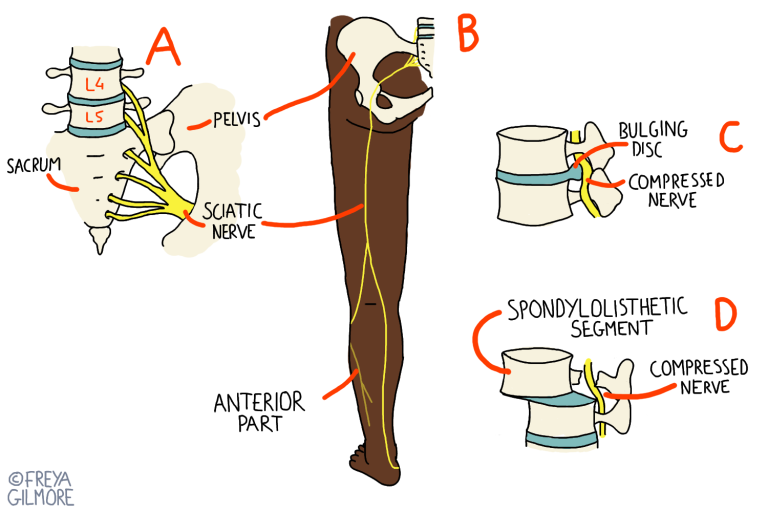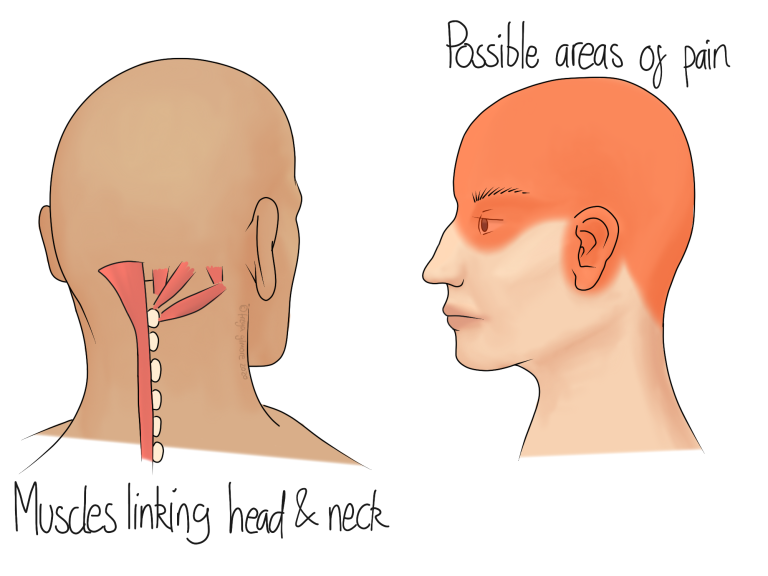Sciatica is a common complaint that brings patients to clinic, but it is also often a bit misunderstood. Sciatica can only affect the area supplied by the sciatic nerve: from the lower back, into the buttock, back of the thigh, calf, and foot. Pain anywhere else in the body, even if the symptoms are otherwise the same, is not sciatica. Other nerves in the leg or arm can be affected in the same way, but technically this is a “radiculopathy” of that nerve.
Symptoms of Sciatica
Because sciatica is such a precise condition, symptoms are very uniform. Pain will develop somewhere along the course of the sciatic nerve, anywhere between the lower back and foot. The location of pain is very well defined, you would be able to draw a line with a pen over the exact area. Other conditions often confused with sciatica cause a more diffuse area of pain, which can be key to diagnosing one condition or the other.
Symptoms of the irritated nerve include:
- a sharp, shooting pain
- pins and needles
- numbness
Depending on what exactly is irritating the nerve, pain may be responsive to movement and positioning. It is helpful for your osteopath if you notice these patterns and let us know at your appointment.
Causes of Sciatica
Sciatica is often thought of as synonymous with a “slipped disc”. This is not always the case, and the terminology is not particularly helpful. Discs are made of cartilage, with a jelly-like substance in the centre. They are so firmly anchored to the bones above and below themselves that even if the vertebra is fractured, the disc will stay attached. So describing a disc as “slipped” gives an unfair image of instability. In reality, discs can bulge or herniate, where the jelly inside pushes up against the cartilage, making a lump that can cause pain.
Not all cases are caused by a disc issue. Another common cause is a deep muscle in the buttock: piriformis. For some people, the sciatic nerve actually runs through the muscle, and for others it runs very close by. If the muscle gets tense, it might therefore directly irritate the nerve. When sciatica is caused by this process, it is known additionally as “piriformis syndrome”. Unfortunately, this tension can lead to a vicious cycle, as the body reacts to the pain by tensing up further. Your osteopath’s approach to this might combine:
- massage to the muscle
- stretches for you to do at home to continue to keep it off-tension
- lifestyle changes to prevent the return of the tension
Anecdotally, we often see piriformis syndrome among sportspeople, such as runners and cyclists. Ensure that your warm-up and cool-down routines are adequate, and especially focus on how your gluteal muscles feel during and after exercise.
Management
One big predictor for a prognosis is the duration of your pain already. The earlier we can address your symptoms, the better the outlook. Treatment will vary depending on the exact cause, but you can expect mobilising techniques and massage to treat the root cause, and potentially desensitising techniques to help to calm the nerve down. Your osteopath might ask you to use heat or ice, and give you stretches and other advice to speed up your progress.
Click here to make an appointment for your sciatica in the Bristol area




